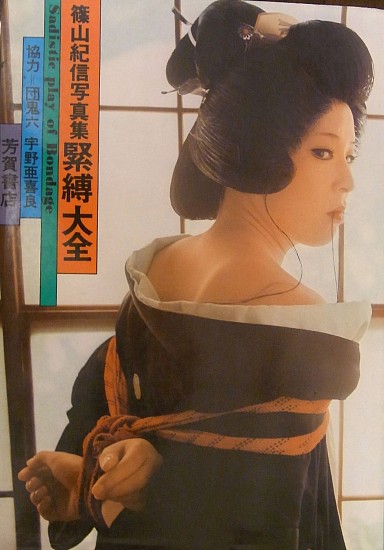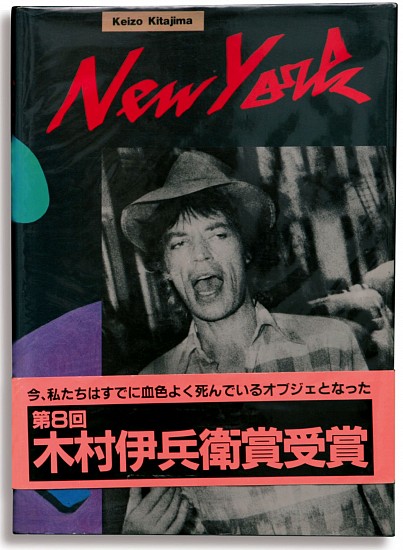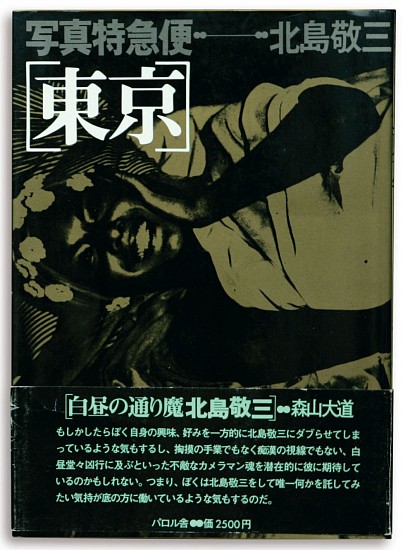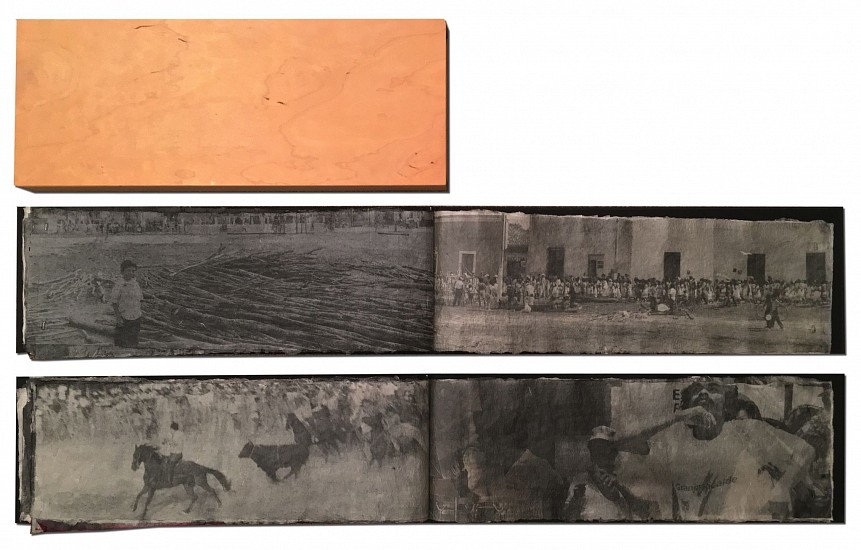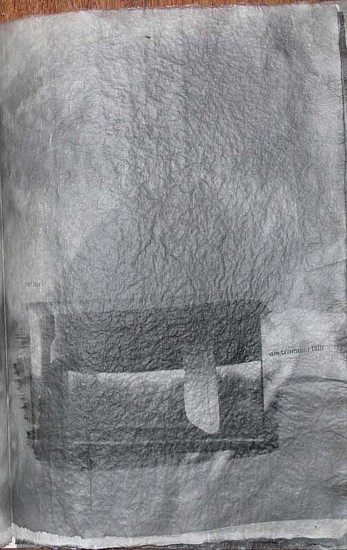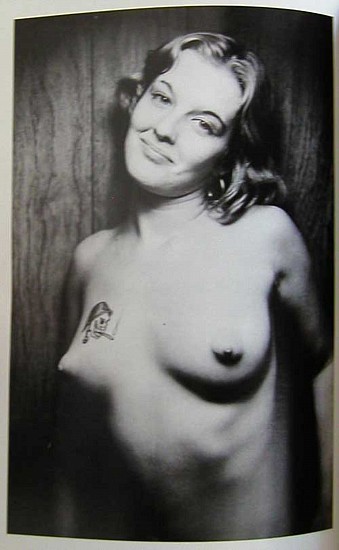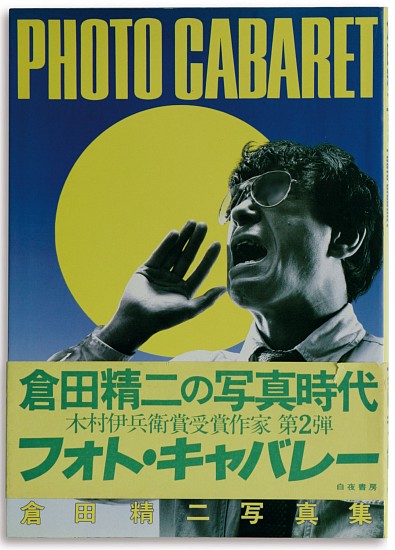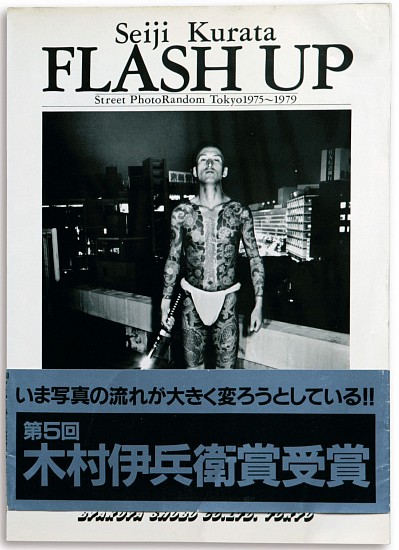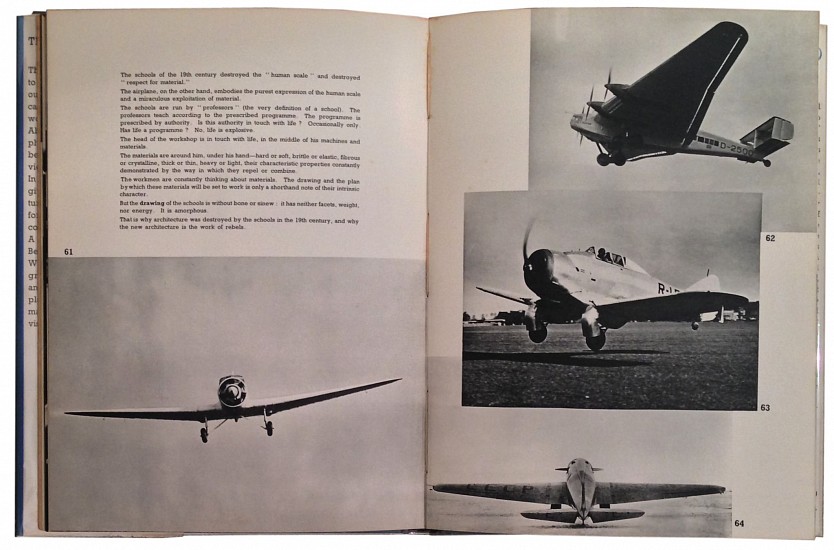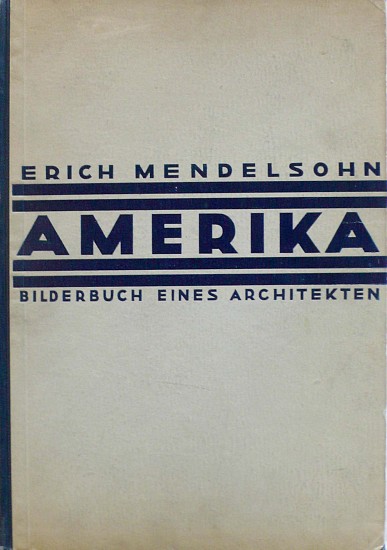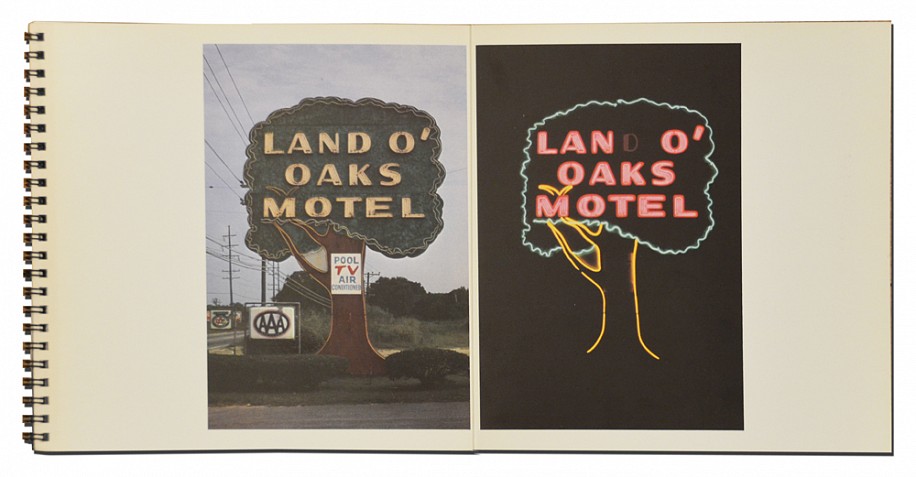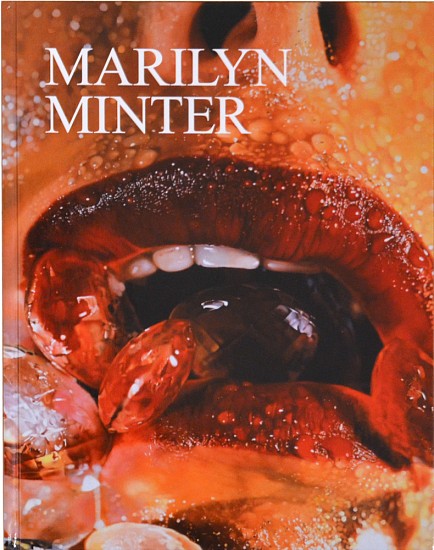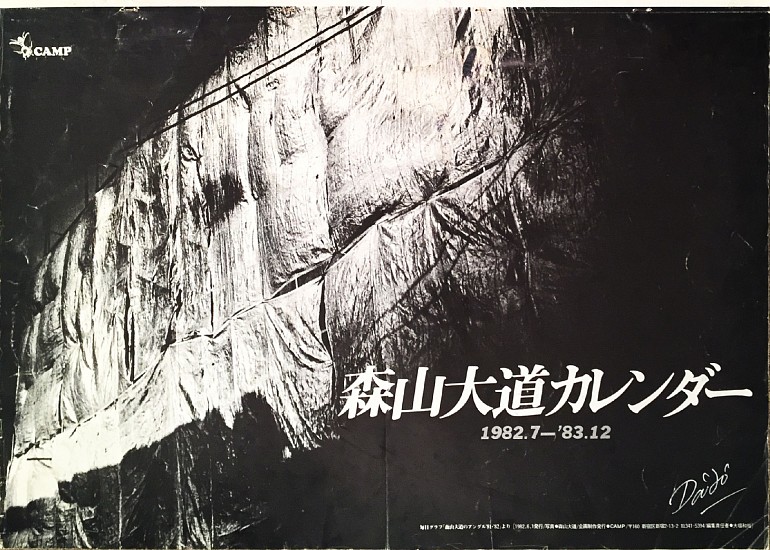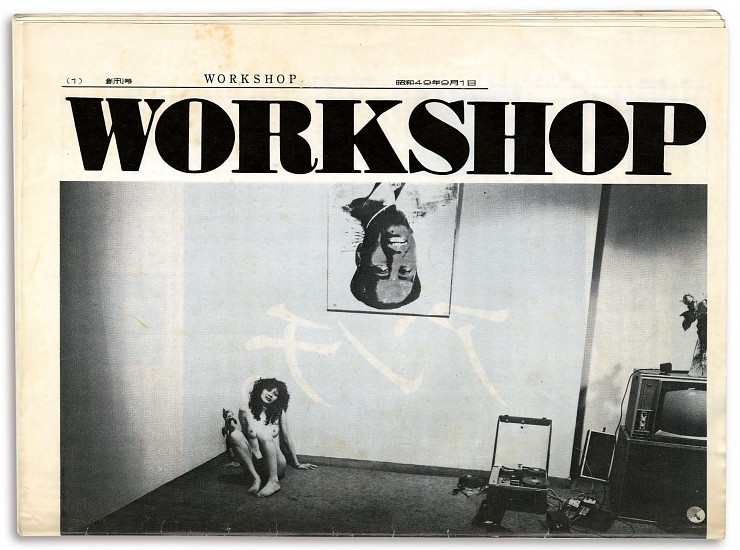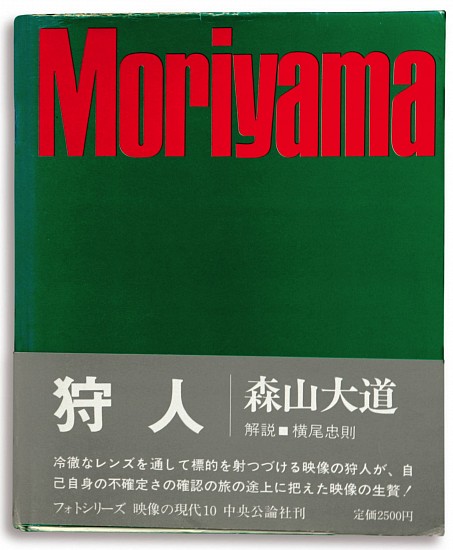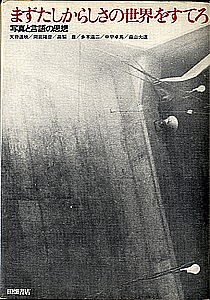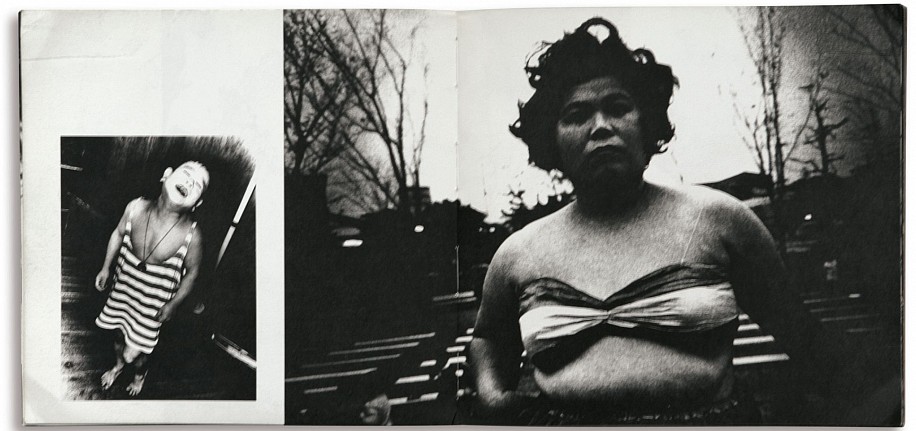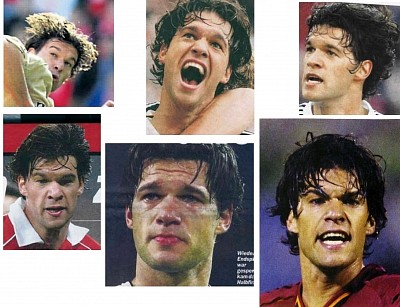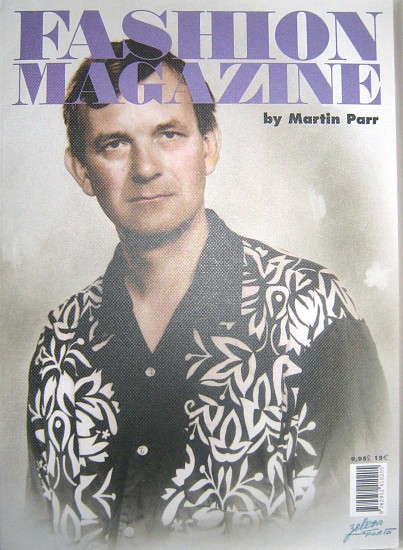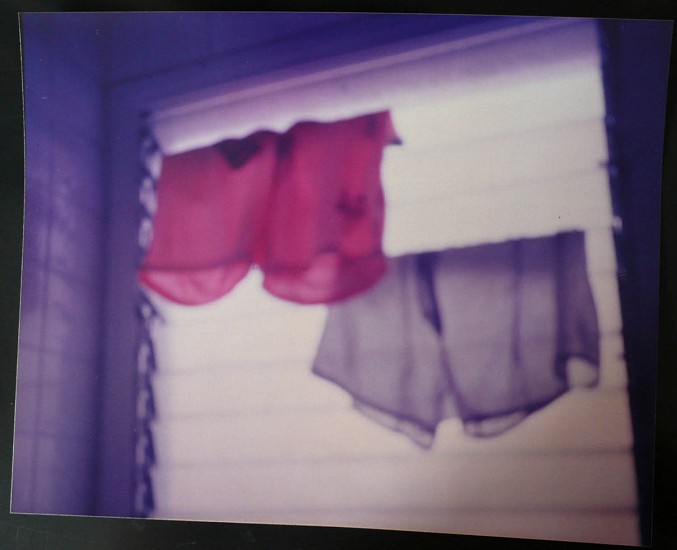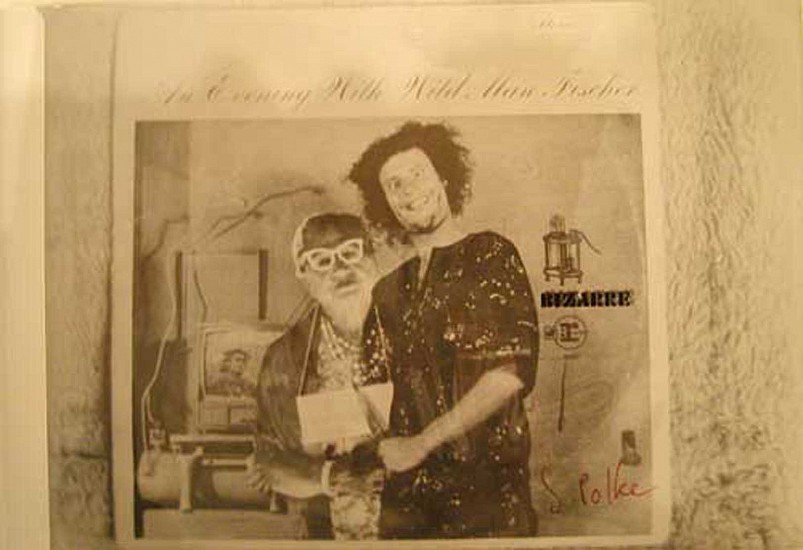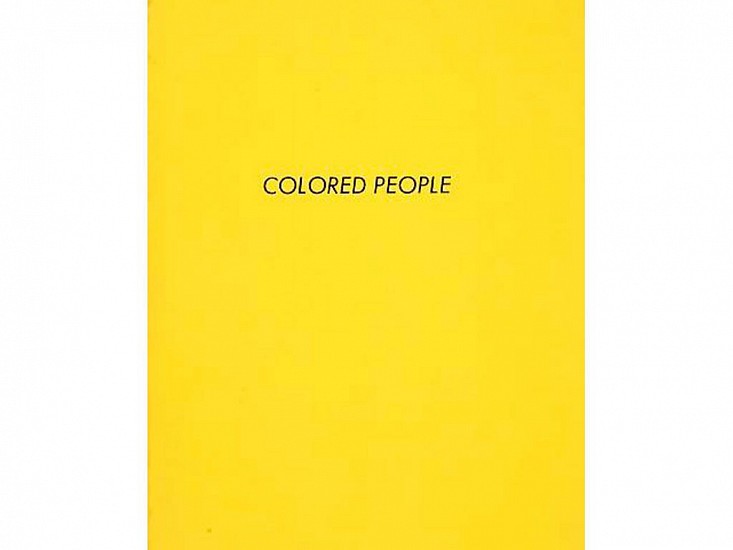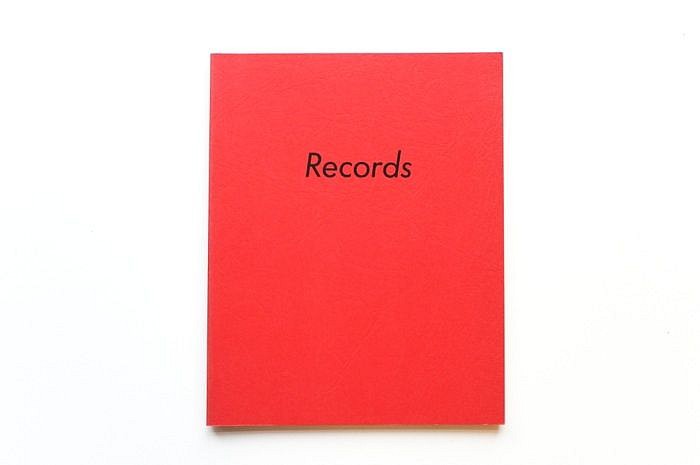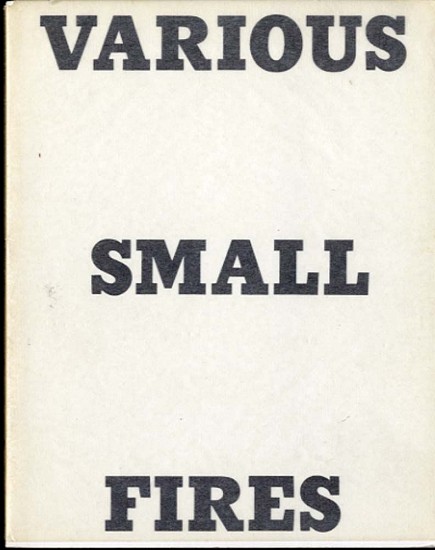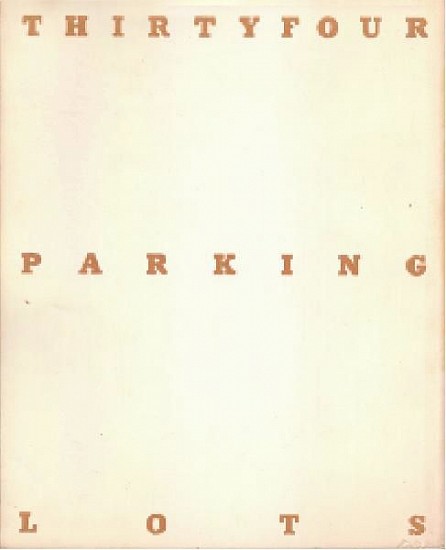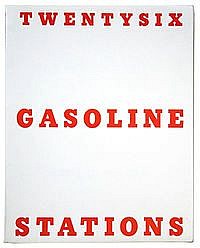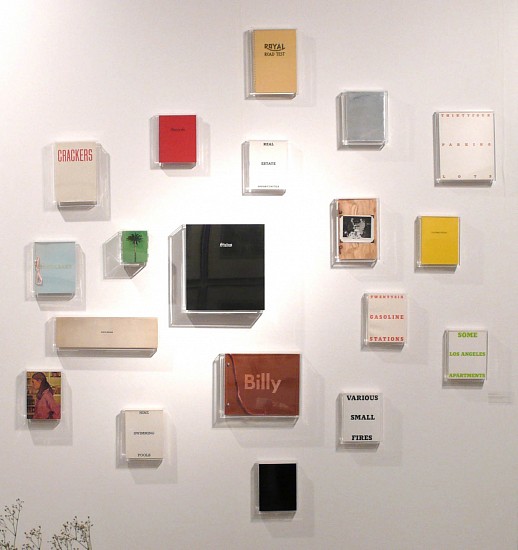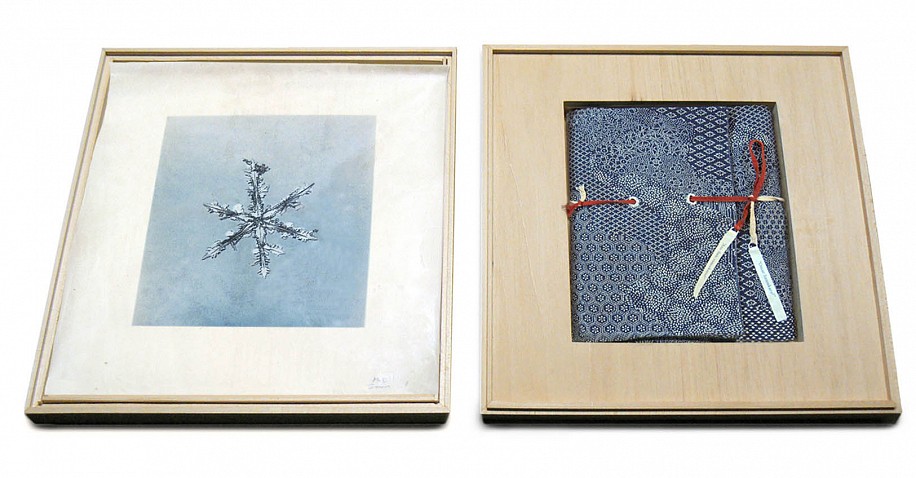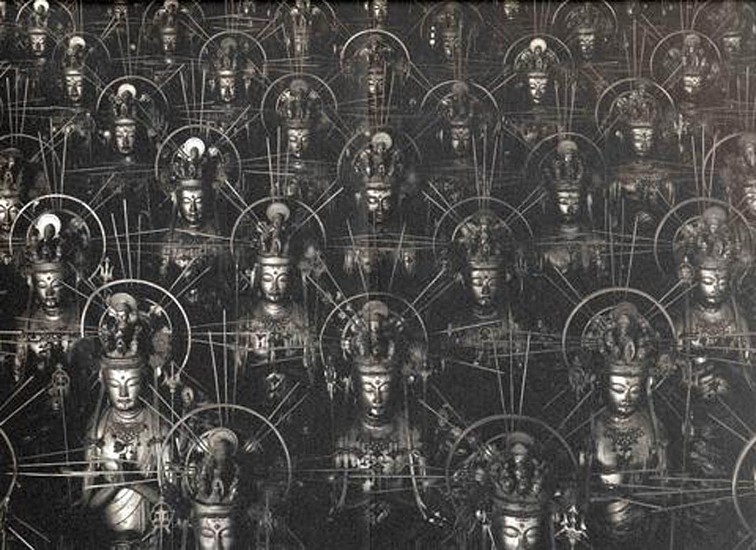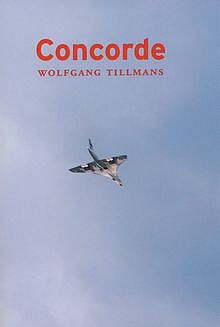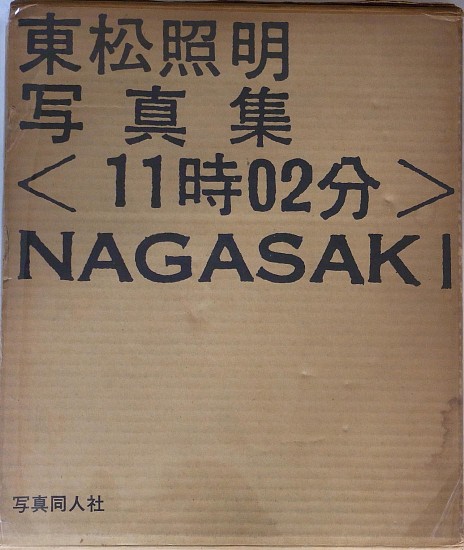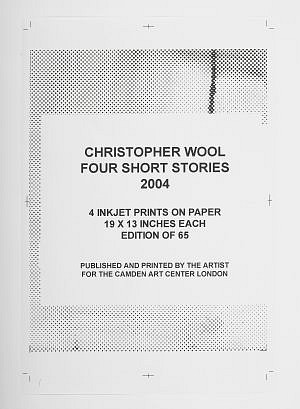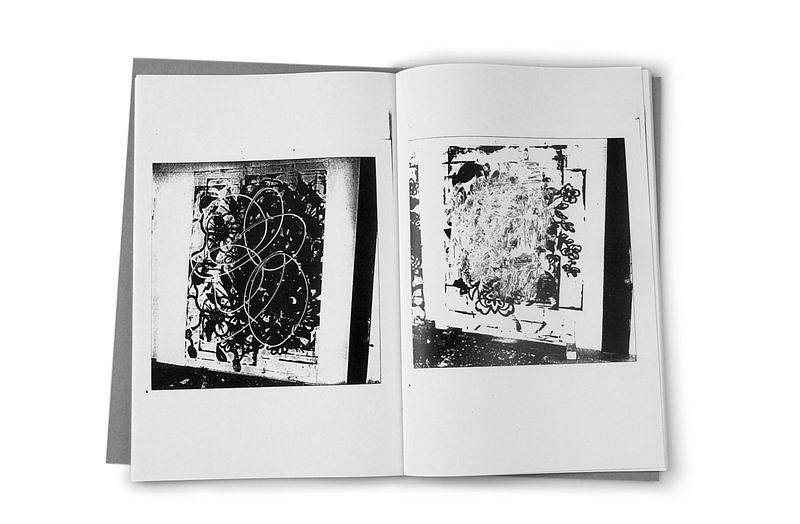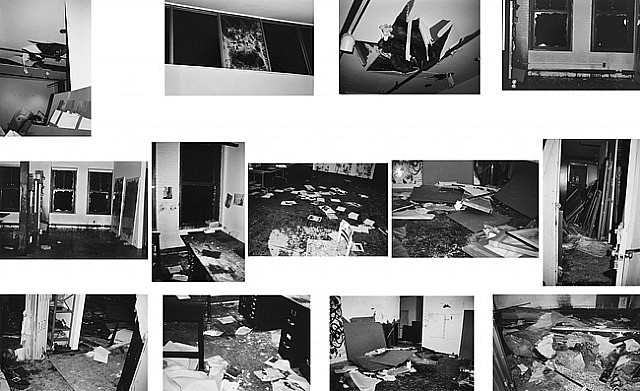Paris Photo LA
Noboyoshi Araki
Oo Nippon (Oh Japan!), 1971
1902
10 5/8 x 8 1/8 in. (27 x 20.5 cm)
Tokyo: Mikishuppan. 255 black and white photographs printed using the heliogravure method. Original colour photo-illustrated self-wraps. Paperback with printed cover. Text by Uchida Eiichi. The strong erotic element of this work would become a characteristic of Araki's style. Female models are photographed nude in front of plain background and organised in sequence. Pubic hair is, in conformity with censorship laws, covered with dark marker pen.
Price Upon Request
Noboyoshi Araki
Senchimentaru no Tabi. (Sentimental Journey)., 1971
1755
Paperback with printed cover. Cardboard slipcase. 108 black and white photographs. Complete with text printed on a green fill-in paper glued on the inside of the cover, reflecting the bookseller's request, after the book had been printed, that Araki add an explanatory text. Without a doubt the most exemplary book by Nobuyoshi Araki, documenting the intimacy of his honeymoon with cutting honesty and the aesthetic of "Provoke". Araki would later refer to the "novel" or auto-fiction when discussing this work. The layout of the book is as important as the photographs. It was his first publication as an author and it had a decisive influence on several generations of photographers in Japan and elsewhere.
Price Upon Request









Artist Collective
Geribara 5 (1 set, 3 vol.) Benjo (toilet), Mizugi no Yangu Redii-Tachi (Young Ladies in Bathing Suits), Five girls, 1971-1972
1757
Takase Yoshio, Araki Nobuyoshi, Takase Yoshio, Yaehata Koji, Tabogami Naohosia, Ikeda Fukuo, Kamiguchi Tomoko. Paperback with illustrated covers. Volume 1: Benjo (Toilette) 258x182 mm (10,1/4x7,1/4 in): 1971. Photographer: Takase Yoshio. 104pp. Paperback. 104 B&W photographs. Volume 2: Mizugi no Yangu Redii-Tachi (10,1/4x7,1/4 in): 1971. Photographers: Araki Nobuyoshi, Takase Yoshio, Yaehata Koji, Tabogami Naohosia, Ikeda Fukuo, Kamiguchi Tomoko. 102 pp. Paperback. 300 B&W photographs. Volume 3: Five Girls 250x182 mm (9,3/4x7,1/4 in). 1972 Photographer: Araki Nobuyoshi, Takase Yoshio, Yaehata Koji, Tabogami Naohosia, Ikeda Fukuo, Kamiguchi Tomoko. 86pp. Geribata brings together several young avant-garde Japanese photographers, of whom Araki is the most prominent, connected by similar tastes for farce and irony associated with their conceptual research. The first volume is a solo work by Takase Yoshio and deals mainly with graffiti in Tokyo public toilets. The second is a collective work uniting differently cropped portraits of young girls posing on Japanese beaches. The third, visually less homogenous, allows every photographer of the group to make a portrait of a woman of his choice.
Sold
Artist Collective
Provoke (3 vol.), 1968 - 1969
1786
Provoke 3: 1968. Taki, Koji ; Takanashi, Yutaka ; Nakahira, Takuma ; Moriyama, Daido ; Text by Yoshinmasu, poem by Okada. Paperback with printed cover. 239x185 mm (9,1/2x7, 1/4 in), 110 pp. Complete collection of this legendary publication (NB: Provoke 4 appeared in 1970, after the group fell apart) uniting the most innovative post-war Japanese photographers. Breaking tradition and taboo, Provoke presented a new style - violent, dirty, embracing the accidental, the blur and shadow of social critique.
Sold
John Baldessari
The Telephone Book (With Pearls), 1988
1704
8 1/4 x 5 3/4 in. (21 x 14.8 cm)
The book features a series of cropped movie stills depicting either a telephone or pearls. Signed and dated by the artist in pen. 62 pages, unpaginated, including 43 black and white illustrations, some with color spots. Gent, Belgium: Imschoot, Uitgevers for IC, 1988. First Edition. 8vo, wraps
Price Upon Request
Lewis Baltz
The new Industrial Parks near Irvine, California., 1974
2109
8 7/8 x 10 in. (22.5 x 25.4 cm)
First Edition Thus. Oblong 4to. Printed Buckram in Dust Jacket. Photography Monograph. Near Fine/Near Fine. np (110pp), 51 duotone illustrations. Designed by Thomas F. Barrow. Text in English and German. "The New Industrial Parks Near Irvine, California" is Lewis Baltz' landmark typological study that virtually single-handedly gave birth to the "New Topographics" movement. It reproduces as a full page each of the fifty-one images that comprised the 1974 Castelli Graphics photographic print portfolio of the same name that was issued in an edition of forty with six artist's proofs. A bright, most handsome example of the uncommon 1974 first printing (cited on pages 298-299 of The Hasselblad Center's "The Open Book", and pages 228-229 of "The Book of 101 Books").
In 1975, the year he published his first book , ‘The new Industrial Parks near Irvine, California,’ Lewis Baltz was also included in a landmark exhibition at the International Museum of Photography at George Eastman House called ‘New Topographics: Photographs of a Man-Altered Landscape.’ Although some of the participants in that show managed to elude the label, Baltz--along with Robert Adams, Stephen Shore, Henry Wessel, Jr., and Bernd and Hilla Becher--was effectively branded, and ‘The New Industrial Parks’ was paired with Adams’ 1974 ‘The New West’ as the most cogent, concise, and rigorous New Topographics documents produced in America. The label stuck primarily because it was invented to describe exactly what California-born Baltz had been doing since the late ‘60s: photograph the American landscape as a dead zone. Tamed, flattened and sectioned off into building sites and real-estate opportunities, Baltz’s New West--most of it located in California’s vast suburban sprawl--had long since lost any memory of magnificence and promise. In their place was the alluring vacuum of anonymity (though that seems beside the point in pictures devoid of any human presence) and desolation so complete it was almost elegant. Baltz had honed in on that austere, unlikely beauty in his earlier series on tract homes, but he refined his vision for the Irvine series, which focuses on the fac¸ades of windowless office blocks and electronics factories, some still in construction on barren lots, others landscaped as perfunctorily as a toll plaza.... [Unlike] Ed Ruscha’s genuinely artless images of apartment buildings and parking lots, Baltz’s pictures are pointedly artful. The Irvine series, though (presumably) despairing of the industrial parks’ cold emptiness, can’t help but establish its link to minimalist painting and sculpture, particularly Donald Judd’s boxes and Carl Andre’s concrete blocks†(Vince Aletti, in Roth): Thomas F. Barrow. Signed and inscribed by L. Baltz.
Price Upon Request
Bernd and Hilla Becher
Set of first 15 editions, 1970-2005
810
Fachwerkhauser, Wasserturme, Anonyme Skulpturen, Hochofen, Fabrikhallen, Industrielandschaften, Typologien, Tipologie Typolhien Typologies, Forderturme, Forderturme Chevalements Mineheads, Zeene Hannibal, Pennsylvania Coal Mine Tipples, Die Architektur Dertorder Und Wassertume, Zeehe Zollern 2, and Gasbehelter
Price Upon Request
Louise Bourgeois
ODE A LA BIEVRE, 2007
1669
Louise Bourgeois was born in Paris in 1911. In 1919, her family moved to the Parisian suburb of Antony where the Bièvre River "cut across the garden in a straight line". The river was key to their relocation as it was imperative to the family's business of tapestry restoration for the washing of the tapestries. In 2002, Bourgeois would distill her emotions and memories of the river and the garden in an important unique fabric book entitled ODE À LA BIÈVRE. In the book she reminisces through images and text, "With the soil from that river we planted geraniums, masses of peonies, and beds of asparagus ...and honeysuckle that smelled so sweet in the rain." Using her own garments as raw material to make sewn fabric collages, she evoked feelings and memories through lines, shapes and colors. Years later, Bourgeois was to go back to the house with her own family only to find the river to no longer exist, "only the trees that my father had planted along its edge remained as a witness". This 2007 book faithfully reproduces that original fabric work. Each book is signed and numbered on the colophon and includes two signed photographs digitally printed on Verona paper and mounted on 300 gram watercolor paper with the respective titles: "The garden in Antony, 1921" and "The Bièvre River, 1951." Housed in a blind embossed slip case each book is uniquely bound with hand dyed and distressed linen.
Price Upon Request
Brassai
The Secret Paris of the 30's, 1976
1578
Inscribed, "Pour Lee Witkin, bien aien amicalement, Brassai, New York, le 11 Oct. 1976".
Price Upon Request
Harry Callahan
Color, 1980
1603
Inscribed, "For Lee Witkin, Harry Callahan".
Price Upon Request
Wim Delvoye
seXrays, 2006
1737
12 x 8 3/4 in. (30.5 x 22.5 cm)
Luxembourg. Beaumont Public. 2002.
80 pages. With 25 reproductions on clear acetate of the X-rays, which were printed on aluminum.. Publisher’s spiral binding within printed boards. Black soft rubber end leaves. Published to accompany a 2002 exhibition in Luxembourg of Wim Delvoye’s s eXrays. Delvoye, with the help of a radiologist, had several of his friends paint themselves with small amounts of barium and perform explicit sexual acts in medical X-ray clinics. When he was not an active participant, Delvoye observed from a computer screen in another room, allowing the subjects enough distance to perform uninhibted, although Delvoye has described the whole operation as “very medical, very antiseptic.
With German text by Peter Bexte "Die Göttliche Komödie der seXrays", and a French text by Olivier Goetz "seXrays de Wim Delvoye: Un rayon de bonheur". Complete with the 15-page English translation bound in at the back.
Price Upon Request
Susan Derges
Azure, 2006
1806
8 1/2 x 6 1/2 in. (21.5 x 16.5 cm)
A 32-page linen bound book with text by Christopher Bucklow to accompany the exhibition of the same name held in 2006 at the Ingleby Gallery, Edinburgh, Scotland, of photographs of the River Taw and sea shoreline. This book contains a unique photogram, a fragment from the first works that Derges made on the River Taw in 1996.
Price Upon Request
Herman DeVries
On The Beach-Morocco 2006, 2006
3548-BK
66 pages ; edition 36, numbered and signed. Title-page and 33 pages each with a photo in colour, back-page with imprint, numbering and signature, japanese binding, in white cardboard box with title on spine. 32 × 21 × 2.7 cm
Price Upon Request
Artistes Divers JAP PH
FRONT: Dai Toa Kensetsu Gaho, 1942-45
2077
Kimura, Kanzano, Sekiguchi, Nishino, Sakaguchi. Front is a tour-de-force of design and photography: Essentially a propaganda magazine it was intended for foreign audiences and presumably distributed to embassies. It was apparently published in fifteen languages. Ironically the magazine was modelled on the famous publication 'USSR in Construction' which was designed by El Lissitzky. Front was a propaganda magazine intended for foreign audiences launched by Tohosha, a publishing company established by members of the International Press Photography Association, at the behest of the army General Staff office with funding from private corporations. A large-format pictorial magazine, it was produced in fifteen languages and distributed to the countries of the Greater East Asia Co-Prosperity Sphere. Each issue was devoted to a particular subject (e.g., the navy), and montage was used int he layout (in a manner similar to USSR in Construction, the Soviet Union's propaganda magazine). Hara Hiromu was in charge of design and Kimura Ihee of photography; Kikuchi Shunkichi, Hamaya Hiroshi, and Sonobe Kiyoshi contributed photographs. Toward the end of the war the magazine moved to the building that housed Mojima Yasuzo's photography studio, but the offices were destroyed in an air raid in 1945, along with the "Tokyo at War" issue, which had just been printed and remained undistributed. Altogether, nine issues were published. After the war, the staff set up a short-lived publishing company, Bunkasha. A facsimile edition of Front was published in three volumes in 1989-90.
Price Upon Request
Artistes Divers OLD & RARE
Les Voitures Renault, 1937
3767-BK
14 3/8 x 10 in. (36.5 x 25.3 cm)
[Reinastella, Vivastella, Monastella]. (Paris, Draeger & Frères imprimeurs, circa 1929). Oblong 4to, publisher's white portfolio, outer ruling in black and white, upper side with embossed metal pieces of Renault's emblem and a small star, blue paper doublures with geometrical design in black. Unpaginated. (30)pp. 4 colour illustrations in the text and 12 superb colour plates showing luxury cars on a black background. Complete. First and only edition of a supremely elegant piece of advertising for «the happy few». One of Draeger's finest productions for the celebrated French car-maker. Uncommon. Excellent copy.
Sold
Tracy Emin
Exploration of the Soul, 1994
906
8 x 8 in. (20.3 x 20.3 cm)
Signed on inside with two original color photographs. Book is housed in a hand sewn white cloth bag with yellow letters "TE". Sold to fund a road trip undertaken by the artist from San Francisco to New York. Emin sold the book at galleries and other venues where she would give one-night performances reading from it.
Price Upon Request
Adam Fuss
All, 2007
1992
Small Folio. 14 four-color plates; bound tissue interleaving; stamped in silver holograpic foil; white paper covered boards; white hande-made paper jacket, stamped in silver holographic foil; fitted, protective vinyl.
Price Upon Request
Adam Fuss
ARK, 2007
1999
Large folio; 34 UV coated, color photographs; full-back leather; blind-stamped colophon on orange hand-made paper, laid into black hand-made paper covered clamshell box, black ribbon tie; illustrated label affixed to box recto.
Price Upon Request
Francesca Gabbiani
White Book, 2005
1844
Artist book of white, pop-up landscapes inspired by the popular non-fiction novel Devil in the White City by Erik Larson, an account of the architect responsible for the 1893 Chicago Worlds Columbian Exposition and the serial killer who worked in its midst. Gabbiani has painstakingly cut in white paper miniature the architectural structures, most notably the Ferris wheel, that reveal the magical appeal and horrifying events of that Worlds Fair. Edition of 20 copies with deluxe copies, 1-6 each having a print with the book. This has the print and is #4 of 20.
Price Upon Request
Luigi Ghirri
Piazza Badaore, 1986, 1989
3450-OR
15 1/8 x 11 5/8 in. (38.5 x 29.5 cm)
Original picture exposed at the Venic Biennale. from the serie of paesaggio Italian. Luigi Ghirri (5 January 1943 1992) was an Italian photographer. Born in Scandiano, Ghirri began taking photographs in 1970, mostly working in a milieu of conceptual artists. From 1983 he focussed primarily on photographing architecture and the Italian landscape. Ghirri also was notable for organising such exhibitions as Iconicittà (1980), Viaggio in Italia (1984), and Esplorazioni sull via Emilia (1986). He worked for the Architectural Section of the third Venice Biennale of Architecture (1985), which was directed by Aldo Rossi, and the Milan Triennale (1988). Ghirri's books include Paesaggio italiano/Italian Landscape (1989) and Il profilo delle nuvole (1989).
Sold
Mario Giacomelli
Mario Giacomelli, 1980
4098-BK
9 x 8 7/8 in. (23 x 22.5 cm)
First monograph published in Italy by Feltrinelli Milano and text by Arturo Carlo Quintavalle with another smaller catalogue
Price Upon Request
Andreas Gursky
Montparnasse, 1995
3668-BK
19 1/2 x 11 in. (49.5 x 28 cm)
Two square quarto vols., and oblong folio photo-reproduction. Original silver coated wrappers, printed in black, original silver coated portfolio, printed in black, all laid into the original silver papered box. A fine copy, with the print in fine condition. First edition, offset lithograph in color, on wove paper, with text book and book of reproduction of blown up images. Andreas Gursky is a German photographer best known for his vast color architectural landscapes. His point of view is often so far from the object that it is difficult to tell what it is. In this photograph, hundreds of windows simply become tiny squares and lose their meaning as architecture.
Sold
Carsten Holler
Key to the Laboratory of Doubt, 2006
1500
Anamorphic key, cast in sterling silver, approx. 3 1/8 x 3/4 x 1/8in.(8 x 2 x 0,5 cm). Polished stainless steel cylinder, 1 1/2 x 3/4 in.(4 x 2 cm). Silver necklace approx. 27 1/2in (70 cm). Production and 3-D scanning by Factum Arte Madrid. Initials engraved and numbered.
Price Upon Request
Carsten Holler
Mushroom, 2004
1814
Suite of 12 color photogravure prints on Somerset paper. In 2000 Carsten Höller presented an exibition, "Upside-Down Mushroom Room" which featured enourmous, fabricated red and white fly-agaric mushrooms, their stalks fixed to the ceiling, slowly rotating in a mesmerising way. Höller's use of mushrooms first appeared in his work in 1994/ 1995, with small scale models of rotating mushrooms. As one of the most important artists of his generation, his work ranges from the purely conceptual to the elaborately architectural. This later work features mushrooms in a series of 12 Photogravure Prints which reflect on this theme, where he is continuously looking to question human behavior, logic, altered states of mind, and even offering the possibility for self-exploration in the process.
Price Upon Request
Howard Hughes
Hell's Angels
1453
Illustrated from production and publicity photographs. 16mo. Pictorialboards depicting a biplane in flight. Pictorial endsheets. Invigorated with his film success, Hughes set out to make a film on his own based on a subject that was near to his heart: aviation. The script for Hell's Angels came from collaboration between Hughes and two screenwriters, and was based on two younng British pilots competing for the affection of and English society girl ( Jean Harlow in her first screen role ). Written, directed and produced by Hughes, Hell's Angels was to be the greatest motion picture ever made. Hughes set out to do just that, spending $563,000 to buy and re-condition 87 fighters and bombers, and another $400,000 to rent or build airfields in the L.A. area. Hughes needed a Zeppelin to burn and bought one.Needing an army to fight a ground battle hired 1,700 extras at $200 a week each. His attention to detail was immaculate. If the scene called for a rainy night, Hughes would require the actors to be on call until it rained at night, and force them to stay awake all night in the rain. The director would demand re-take after re-take of scenes, often because of his own flaws. And Hughes' attention to detail on the ground was nothing compared to that of the air.The film called for airplane battles in cloudy skies, and for once, Hughes quickly learned that you can't buy clouds. He began to rise early, or stay up all night to watch for an opportune dawn. If the sun rose over Southern California, 40 or more airplanes would take off and seek out cloudy skies. When the weather predicted clouds miles away, Hughes, the pilots, and the fleet of planes would travel in hopes of the proper backdrop. And some days everyone would get paid to stand around. Hell's Angels, many months in production seemed to be drawing to a close, only Al Jolson's The Jazz Singer brought an audible revolution to Hollywood. Sound became the standard by which pictures were judged and Hughes' film lacked just one thing: sound. The film, at length, edited, cut and fitted with titles, was given an unannounced preview in a small L.A. theater. The response from the audience was clear; the 2 million dollar silent picture was not good enough. Hughes refused to quit and set to work on Hell's Angels anew. The flight scenes were easy enough to fix, the sound could be dubbed in, but the scenes in which the actors were to speak would have to be shot all over again. The first task was to write a new screenplay. Hughes insisted that in a silent picture actors could get away with mouthing their words, but in a talking picture they would have to makes sense. He also demanded that the cast be completely overhauled out of fear that one individual might not sound good reading his lines. Production continued through the great depression, and in May of 1930 the film was completed. Hughes had shot 3,000,000 feet of film (1% was used in the final production), and spent almost 4 million dollars, including $754,000 for salaries, $524,000 for sets and costumes, $1,000,000 for aircraft and location. The film opened to pandemonium in Los Angeles. Despite terrible reviews, the public went wild for Hell's Angels. The film set box office records in every theater in that it played, and went on to appear on screens for over 20 years throughout the world. And in the end, it brought in just over eight million dollars, roughly twice Hughes' investment. ( Doug Barrese)
Price Upon Request
Yasuhiro Ishimoto
Car in snow from "Somedays somewhere", 1990
2337
Printed from the original negative by the artist, signed.
Price Upon Request
Japan Advertising Photographers Association
Sukiyandara (Scandal), 1972
3369-BK
Price Upon Request


Kikuji Kawada
Nude Theater, 1984
1968
19 7/8 x 15 15/16 in. (50.5 x 40.5 cm)
Black leather portfolio containing 10 large silver gelatin photographs taken in 1981 on the artist’s trip through Europe, each one signed on the back. Kawada, known for his legendary book, "Chizu (The Map)", departs from his Provoke movement roots and photographs nude women in Old Master paintings. During this time Daido Moriyama and Keizo Kitajima were exhibiting their post-Provoke imagery using street photography and graphic imagery. Some 10+ years later Hiroshi Sugimoto took portraits of people in Old Master and Renaissance paintings, which may have been influenced by this project by Kawada.
Price Upon Request
Richard Kern
Action, 2007
4296-BK
12 1/4 x 9 1/4 in. (31 x 23.5 cm)
Signed and dated 2007
Price Upon Request


Anselm Kiefer
DIE DONAUQUELLE. [The Source of the Danube]., 1978
3498-BK
Artist's book. Black and white. Cloth hard covers. Stitch bound. Full-page black and white photographs of a brick-walled 'well' in a rubble-filled warehouse setting. Edition of 500 copies. Very good condition. 12 x 8.25". Unpaginated. Photography.
Sold
Shinoyama Kishin
Sadistic play of Bondage., 1971
1934
A collection of bondage images, color and bw, with more humor than Araki, as evidenced by the color shots of tied-up Yakuza. The apotheosis in Japanese photobooks of bondage as theater. Little-known in the U.S., this book is every bit as good as Shinoyama's Hareta Hi. Included with this copy are two original vintage gelatin silver prints used for the publication. Near fine in wrappers in a near fine jacket.
Price Upon Request




Keizo Kitajima
New-York, 1982
1778
8 5/8 x 11 7/8 in. (22 x 30.2 cm)
Tokyo: Biyakuya-shobo.
140 full-page black-and-white photographic reproductions. Original cloth, with photo-illustrated dust jacket and printed bellyband.
Kitajima spent six months in New York, roaming its streets and hanging out in its clubs. In the resulting book, he presents a vision of the 1980s New York in the vein of photojournalist photographers Weegee (Arthur Fellig) or William Klein. Kitajima’s images document both the chaotic street-life and underbelly of early 1980s New York. The publication is full of stark juxtapositions, capturing both the city’s energy and decadence. Flamboyant displays of outrageous behavior in nightclubs are shown next to pictures of desolation and dejection in the East Village. In New York, Kitajima’s work expands from carefree candid portraiture of the clubs, to a sober photojournalistic depiction of the seedy street life of New York, photographing the desperate living conditions of the impoverished American in New York.
For this photo book Kitajima received the prestigious Kimura Ihei Award in 1983.
Price Upon Request





Keizo Kitajima
Shashin Tokkyubin Tokyo (Photomail from Tokyo), 1980
1770
7 1/4 x 10 1/8 in. (18.5 x 26 cm)
Tokyo: Paroru-sha.
113 photographs, including some reproduced in color. Folded poster bound in at front of the book, with text and illustrations printed on one side and a large, two-color reproduction on verso. Original wrappers, with photo-illustrated dust jacket and printed bellyband.
In 1979 Keizo Kitajima, a graduate of Daido Moriyama’s class at Workshop, the influential photography school founded by Shomei Tomatsu, held a series of monthly exhibitions at Image Shop Camp, a gallery and forum he established with other members of the Workshop group after it closed. Each of the twelve exhibitions was accompanied by a publication entitled Photo Express Tokyo. Shashin Tokkyubin Tokyo gathers together images from the Photo Express issues into one volume, interspersed with color work not included in the original series of magazines. The work captures Kitajima's night-time wanderings through the underbelly of Tokyo. His style of photography seemed to exemplify an “other-worldliness†that was in stark contrast to the decorum of daytime Tokyo. "The combination of black and white with color is interesting, because this is a difficult trick to pull off. The tension between Kitajima's flamboyant, contrasty, edgy monochrome and his matter-of-fact, understated color makes this one of the most distinctive books in the wide bibliography on Shinjuku nightlife." (Parr & Badger)
[Ref. Martin Parr & Gerry Badger, The Photobook: A History, vol.III]
Price Upon Request
Stephan Köhler
Mexico, 2000
2093
7 3/8 x 20 in. (19 x 51 cm)
Collaboration with Clemens-Tobias Lange. Two volumes, bound in linen and silk with iron spine, housed in a wooden slipcase.
Published by CTL-Presse, Hamburg.
Each of the two volumes begins with excerpts from letters by Catalino (in Spanish with English translation), written from 1987–1994. Volume One tells of the hardships of farm life and the devastating effects of a hurricane. The images show daily life on the fields and in the small town of Tekit. Volume Two concerns the day’s fiesta, anticipating it in the letters, and the mixture of culture identification through photographs of processions, dances, and bullfights. The semi-transparent pages with Köhler’s photographs were printed in a darkroom on gelatin-coated Kozo Japanese paper handmade by the photographer in his Paper Bridge Mill in Gifu. 25 regular copies numbered 1–25 and 10 e.a. numbered 26–35. This copy is a special publisher’s copy, unnumbered.
Price Upon Request
Stephan Köhler
Ein Gedicht fur ein buch, 1996
1489
A collaboration of the writer Yoko Tawada, the artist Stephan Köhler and the bookdesigner Clemens-Tobias Lange; This artists' book is a tautologic work, it is on reading, on artistic process. There are only a few words on pagefilling silver-gelatine printed sheets. The photographs by Köhler are painted on the translucent and crispy medium. Photoemulsion and letterpress on handmade japanese paper. Bound in natural colour ray-skin (Galuschat) by Thomas Zwang. Edition: 45 + XV e.a.
Price Upon Request
Eric Kroll
Sex Objects: An American Photodocumentary, 1977
1345
First Edition, Near Fine and unread in wrappers (softcover), uncommon thus. A bright copy of this seminal photo book of nude modeling studios in the USA inthe 70's. *signed by artist
Price Upon Request



Seiji Kurata
Photo Cabaret, 1982
1772
8 1/4 x 11 1/2 in. (21 x 29.5 cm)
Tokyo: Byakuyashobo.
Black-and-white photographic illustrations throughout. Text by Seiji Kurata, post-script by Arira Hasegawa. Graphic conception by Tsunehisa Kimura. Original stiff wrappers with photo-illustrated dust jacket, and printed bellyband.
In Photo Cabaret, published two years after Flash Up, Kurata does not only confine himself to the dark underbelly, but embraces Japanese society in all its diversity, albeit with his customary dark approach. More gritty street photography documenting the seamier sides of the various criminal and sexual subcultures positioned in the margins of Tokyo nightlife is evident.
Price Upon Request




Seiji Kurata
Flash Up. Street PhotoRandom Tokyo 1975 -1979., 1980
1773
8 1/4 x 11 5/8 in. (21.1 x 29.6 cm)
Tokyo: Byakuyashobo.
199 black-and-white photographic illustrations. Text by Takashi Ueno, Kazuo Nishi and Akira Hasegawa. Design by Akira Suei. Original wrappers with photo-illustrated dust jacket, clear acetate outer jacket, and printed bellyband. With the famous cover picture of a Yakuza, heavily tattooed and brandishing a samurai, on a Shinjuku rooftop.
Flash Up by Seiji Kurata is a photographic excursion into the seedy parts of 1970s Tokyo nightlife. Kurata, who began his photographing career doing workshops with Daido Moriyama and Araki Nobuyoshi, traveled through the nightclub scene of Ikebukuro and Shinjuku, photographing the tattooed yakuza underworld and violent street fights, and directly contrasting car crash victims with portraits of nightclub hostesses and ultra-right wingers of the Black Dragon Society. With this book Kurata earned the Kimura Ihei Award recognizing new photographers in 1980. Unlike the more expressionistic styles of his Provoke teachers, Kurata’s medium-format photos carry a journalistic clarity, and do so without sacrificing any energy or sense of immediacy.
Price Upon Request
Le Corbusier
Aircraft, 1935
3484-BK
9 7/8 x 7 5/8 in. (25.2 x 19.4 cm)
92 pages, 16 of text with 124 illustrations, most being photographs and some are reproduced drawings.
Published by The Studio, London.
Aircraft celebrates flight and casts the airplane as the pinnacle of modern technological achievement. The book captures the enthusiasm and ideas surrounding the aerial age. Le Corbusier opens the book by emphasizing the “ecstatic feeling†that flight produces in him. It is “symbol of the New Ageâ€, promising adventure, progress and wild possibility. He idealizes the aesthetics of the machines, too, which possess “clearness of function†(a core principle that underpinned Le Corbusier’s utopian architectural schemes). Le Corbusier’s captions are typically bold and uncompromising. The text that accompanies image 9, for example, reads: “The bird’s eye view … man will make use of it to conceive new aims. Cities will arise out of their ashes.â€
Reference: Fotografia Publica 132, p.81; Le Corbusier et le livre, p.122
Price Upon Request
Erich Mendelsohn
Amerika, 1929
1591
This book is not inscribed.
Price Upon Request
Toon Michiels
American Neon Signs by Day and Night, 1980
4205-BK
First and second edition of this rare publication
Price Upon Request
Marilyn Minter
Marilyn Minter, 2007
4297-BK
11 1/4 x 8 5/8 in. (28.5 x 22 cm)
Text by Johanna Burton. Published by Gregory R. Miller
Price Upon Request



















Daido Moriyama
Calender Camp, 1982
1776
19 7/8 x 28 1/4 in. (50.6 x 72 cm)
Text de Moriyama Daido. This publication, the only one Moriyama produced with the editors of Camp, provided members of the Camp collective with an opportunity to pay homage to their mentor and inspiration: Daido Moriyama.
Price Upon Request
Daido Moriyama
Workshop. Nos. 1 - 8., 1974 –1976
1763
19 5/8 x 14 1/8 in. (50 x 36 cm)
Tokyo: Workshop Shashin Gakko, September 1974 –July 1976
Vols. 1 - 4: 50 x 36 cm; 19 ¾ x 14 ¼ inches; unbound broadsheet newspapers,
Vols. 5 - 8: 28.5 x 14.4 cm; 11 ¼ x 5 ¾ inches; in original stapled photo-illustrated wrappers.
Workshop was the eponymous journal of Workshop, a photography school where limited-enrollment classes were taught by a group of photographers—Araki Nobuyoshi, Shomei Tomatsu, Masahisa Fukase, Eikoh Hosoe, Daido Moriyama and Noriaki Yokosuka—beginning in April 1974. Each member of the group was given responsibility for a section of the magazine, which actively explored new trends in photography through essays and criticism (for example, the photographs in the final eighth issue are given over entirely to Seiji Kurata, and include unpublished photos plus photos that would later appear in his photobook Flash-Up). It was first issued as a tabloid on a limited subscription basis, but after the fifth issue, in October 1975, it was published as a magazine-sized photography collection. The school closed in March 1976, although the magazine continued for annual subscribers through the eighth issue in July.
Price Upon Request




Daido Moriyama
Karyudo (Hunter), 1972
1759
Hardcover with authors name printed on the dust jacket. Comes with bellyband. 104 black and white photographs with a text by Tanadori Yokoo. Most of Moriyama's cult images are featured in this special monograph of the photographer's work.
Price Upon Request
Daido Moriyama
Provoke 4,5, 1970
1752
Paperback with printed cover and dust jacket. The Provoke group came together for the last time, having split up in 1970, to produce these issues of Provoke magazine. Abandoning the security of the initial format, they explored new ideas around photography and language, evoking the principal revolutionary concepts evident in the first three issues.
Price Upon Request
Daido Moriyama
Nippon Gekijo Shashincho (Japan A Photo Theater), 1968
2185
8 1/4 x 8 5/8 in. (21 x 22 cm)
Paperback, title printed on the green cover, in its original cardboard slipcase. 149 black and white photographs printed using the heliogravure method. Text by Shuji Terayama. This is the first publication entirely devoted to Moriyama's work. Images are violent and dark. Deeply influenced by William Klein's New York, Moriyama transforms texture, contrast, deformation, the accidental, and abstraction into a visual language representative of the Provoke movement in Japan.
Price Upon Request
Olaf Nicolai
Ballack, 2007
4302-BK
1 x 8 1/4 in. (2.5 x 21 cm)
Suite of 70 color prints on archival newsprint, each hand cut and collaged on board, each signed and numbered; with colophpon page, in aluminum case with screenprinted covers.
Sold
Martin Parr
Fashion Box, 2005
841
Magazine and six signed lambda prints (20 x 30 cms,) boxed.
Price Upon Request
Jack Pierson
All of a Sudden, 1995
1686
Quarto, unpaginated, colored illustrations throughout. Illustrated paper over boards. Design Jack Pierson and Tony Morgan. Mint copy. First and limited edition. One of 80 (#3) numbered and signed copies with original signed C-print. Print loosely laid in. In publisher's printed paper over boards slipcase.
Price Upon Request
Sigmar Polke
Bizarre, 1972
1086
Containing 42 offset litho prints of photographs taken by Polke in Cologne and Dusseldorf during the 1972 West German general election.
Price Upon Request
Ed Ruscha
Colored People, 1972
1515
With card . 15 color illustrations (1 doublespread) of cacti, succulents, palms, banana trees, etc. [32] pp. + 16 blank leaves. Glossy yellow wrappers. Engberg B16.
Price Upon Request
Ed Ruscha
Records, 1971
1514
Includes 60 illustrations of 30 LP records and their jackets selected randomly from Ruscha's collection (photos by Jerry McMillan). [72] pp. (the last 7 blank). Red wrappers. The cover has a faint, black semicircular mark (a printing defect, not later soiling) Engberg B15.
Price Upon Request


Ed Ruscha
Various Small Fires, 1970
1533
Los Angeles: self-published (printed by Anderson, Ritchie & Simon).
400 copies. 16 plates (15 of them—all except “milkâ€â€”with tinted background). [48] pp. (the last 9 blank).
White printed wrappers, with glassine cover.
As new, apart from very slight darkening of glassine.
17.9 x 13.9 cm. Engberg B2.
* Inscribed by Ed “give to Henry†written on compliments of author card laid in.
Price Upon Request
Ed Ruscha
THIRTYFOUR PARKING LOTS, 1967
1557
-SIGNED-Includes 31 plates (final one with small gatefold tag). [48] pp. White wrappers printed in dark orange, without glassine cover. signed "E Ruscha" in red pen and early signature Photographs by Art Alanis. Engberg B5.
Price Upon Request


Ed Ruscha
Twentysix Gasoline Stations, 1967
1477
Second printing of the young artist's first and most influential book, 1 of 400 copies printed in April 1963 by the Cunningham Press, Alhambra, California. 16 pls. [48] pp. White wrappers with red printing and glassine cover.
Price Upon Request
Ed Ruscha
Ruscha set W/stains, 1963-78
994
Twentysix Gasoline Stations Various Small Fires Some Los Angeles Apartments,Every Building on the Sunset Strip Thrityfour Parking Lots, Royal Road Test Business Cards Nine Swimming Pools Stains Crackers Babycakes Real Estate Opportunities A Few Palm Trees Dutch Details Records Colored People Hard Light Note that Business Cards & Stains are signed as issued. Additional books included: Billy, Edward Ruscha Green Small Book with Foster/Ruscha Cards all in 19 plexi boxes.
Price Upon Request
Mike & Doug Starn
Ani-San, samukaro? Omae samukaro?, 2007/2008
2174
40 pages with 19 B&W Illustrations, each wrapped in a unique vintage kimono fabric each having one photograph from the book on gampi paper with encaustic, signed and numbered housed in a bass wood box. A hand crafted bass wood Japanese box houses a unique signed photograph; inkjet on gampi paper, hand coated with encaustic, under which the book is found wrapped in an indigo vintage kimono fabric. The package is tied with red and white cords, each one with a small paper flag inscribed with a question from the title. The story reveals the significance of the book wrapped in a threadbare kimono under the snow. Each book is hand-made, thread bound using traditional Japanese techniques, with 19 photo- micrographs of snow crystals that were shot by the artists during snowstorms between 2004 and 2006. The images are printed on gampi paper, the back of each image is hand-painted with white acrylic and then finally the image is brushed with a single stroke of varnish. A signed colophon is inside the box.
Price Upon Request
Hiroshi Sugimoto
Sea of Buddha, 1997
1720
48 black and white photographs, title pages and impressum folded into a Leporello (accordion style) and attached to 2 polished aluminium cover plates, contained in a silk-covered slipcase. Design by Takaaki Matsumoto.
Price Upon Request


Wolfgang Tillmans
Concorde, 2008
3725-BK
Paperback. 160 x 240 mm (9 1/2 x 6 1/2 in). 128 pages. 63 colour photographs.
Price Upon Request
Shomei Tomatsu
Nagasaki 11:02, 1966
2142
Illustrated with reproductions of Tomatsu's photographs of Nagasaki after the atomic bomb. 4to, photo-pictorial boards, the spine shows darkening, else near fine, in the publisher's printed slipcase which has a small dampstain. Parr/Badger I 276; Hasselblad 226. The first book by this founding member of the Vivo group with Hosoe, Ikko and others. In 1961 Tomatsu worked with Ken Domon on the Hiroshima-Nagasaki document; this book is his subjective document, titled after the time of the atomic explosion. Tomatsu's influence has been of great importance in the development of modern Japanese photography. Signed by the photographer with his chopmark on the colophon.
Price Upon Request
Christopher Wool
Four Short Stories(4 parts), 2004
4213-BK
19 x 13 in. (48.3 x 33 cm)
A set of four color Inkjet prints on wove paper with full margins, printed by the artist, each one signed, dated, and numbered in pencil. Title sheet on copy paper. Published to benefit the Camden Arts Center in London. Edition of 65 copies.
Price Upon Request
Christopher Wool
Maybe Maybe Not, 2001
4138-BK
Signed Artist book edition of 300 copieser 181 of 300. Numb
Price Upon Request
Christopher Wool
Incident on 9th street, 1997
3765-PH
13 silver gelatin photographs in an edition of #7/12 signed and dated
Sold































![Anselm Kiefer, DIE DONAUQUELLE. [The Source of the Danube].
1978](/images/19875_h100w100gt.5.jpg)



































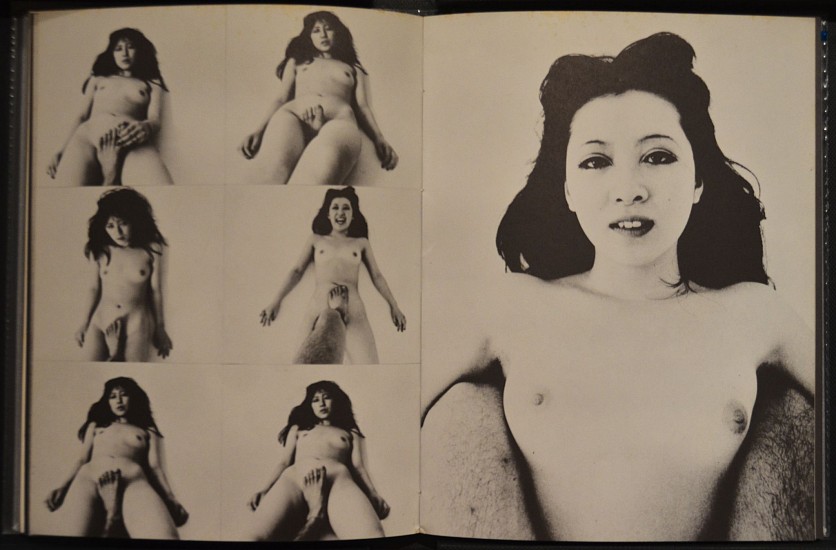
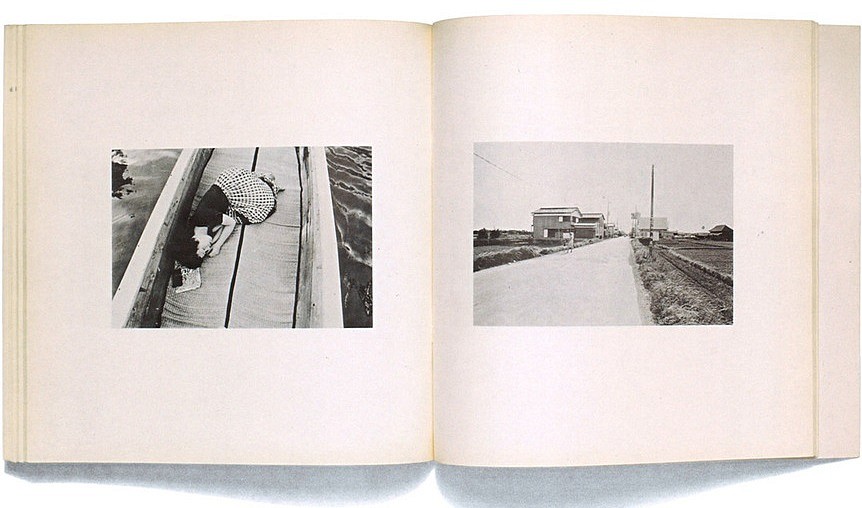
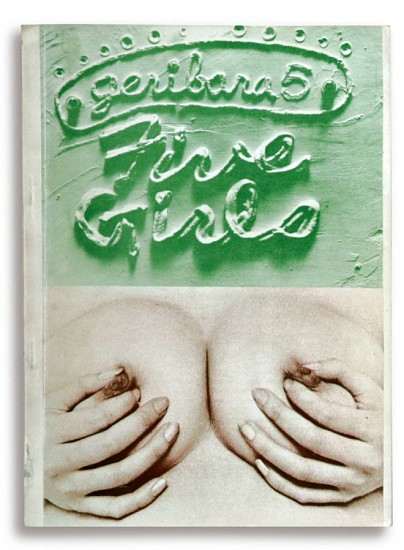
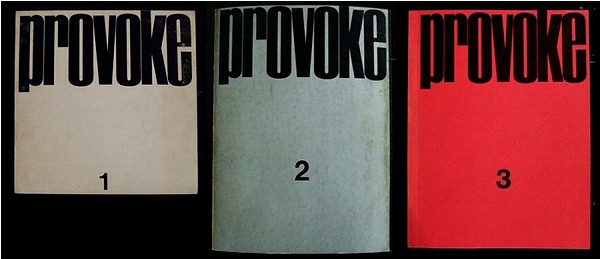
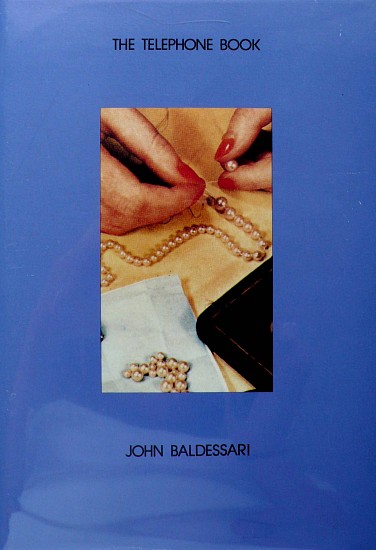
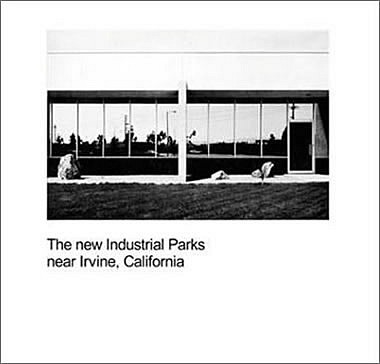
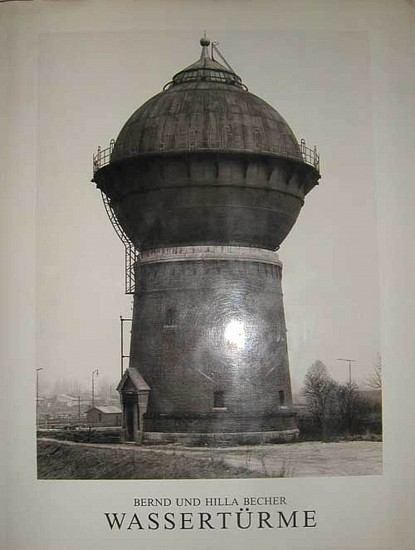
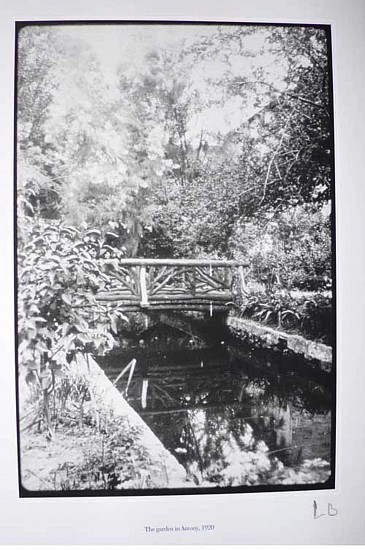
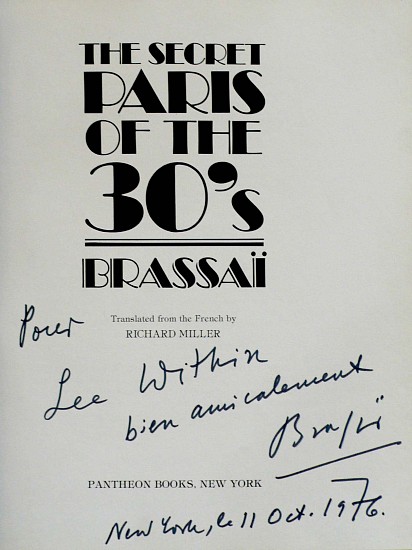
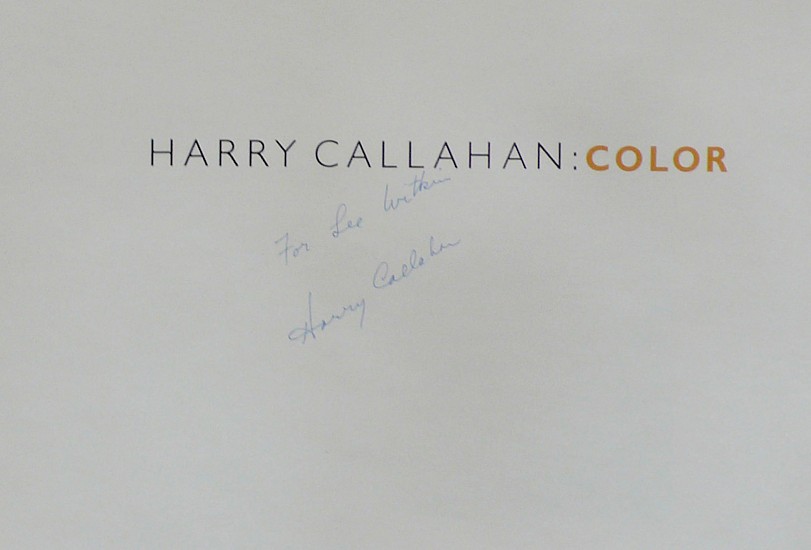
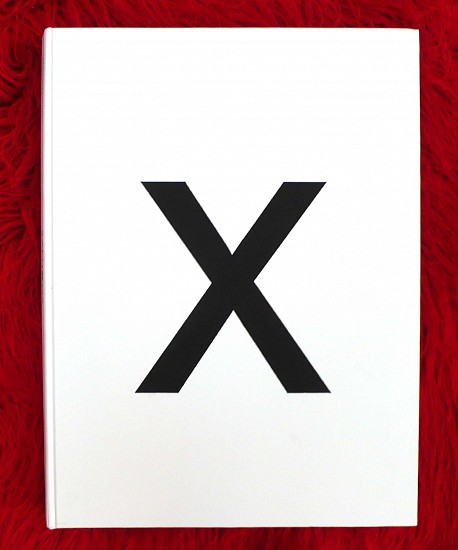
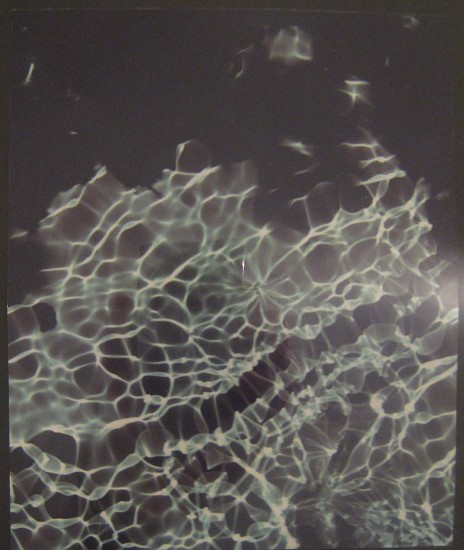
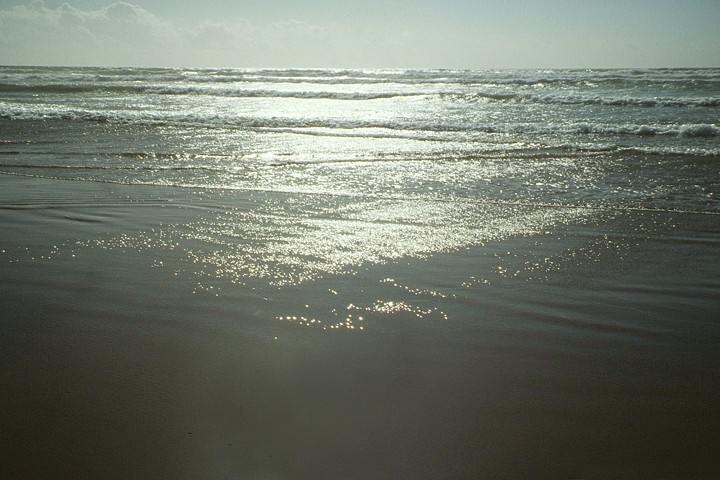
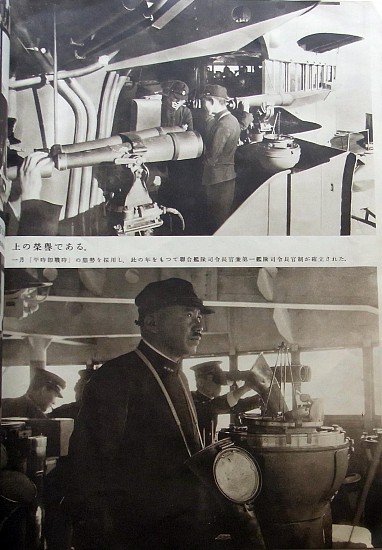

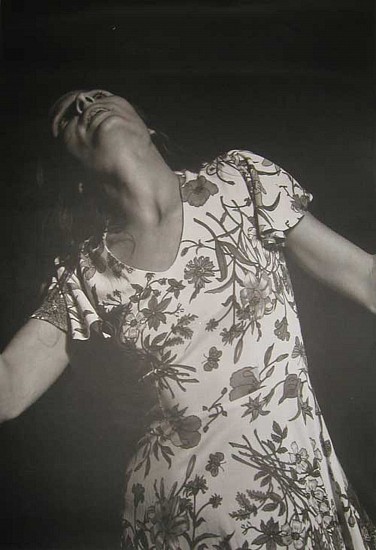
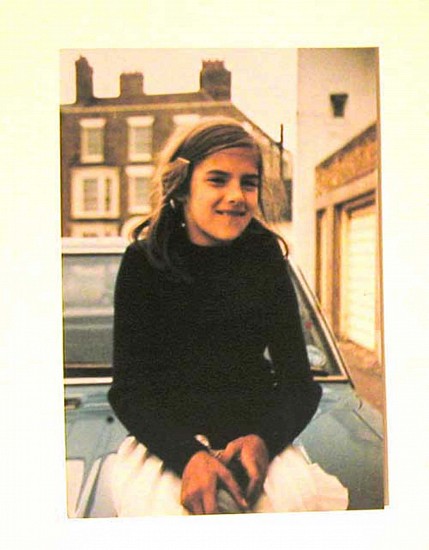
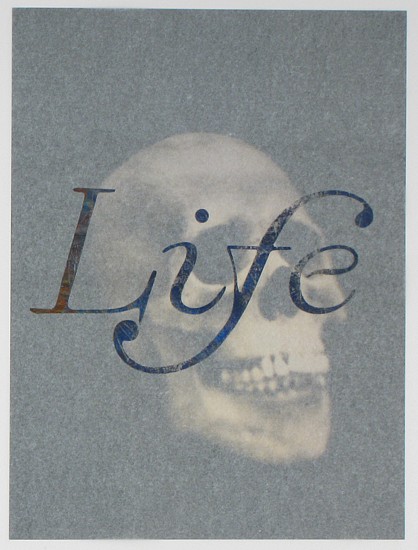
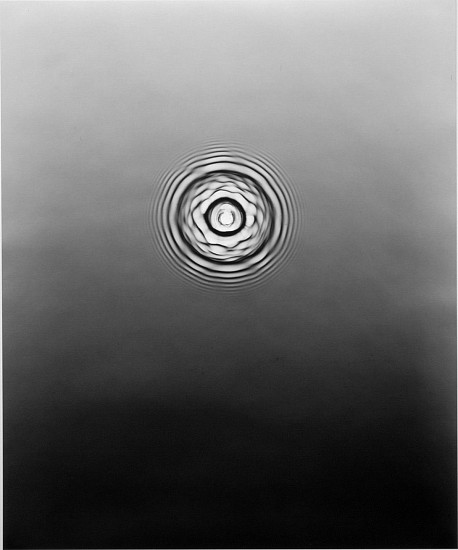
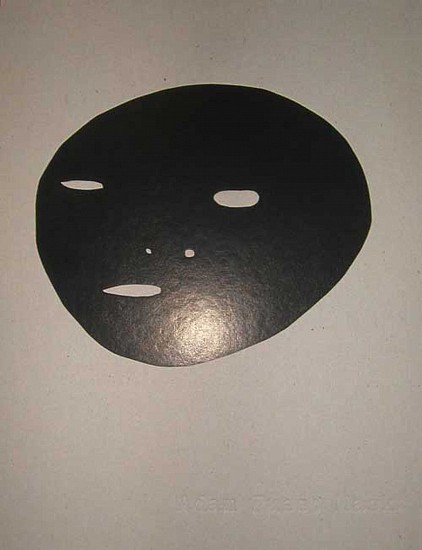
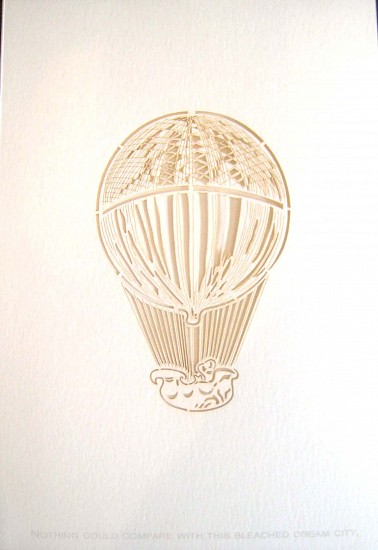
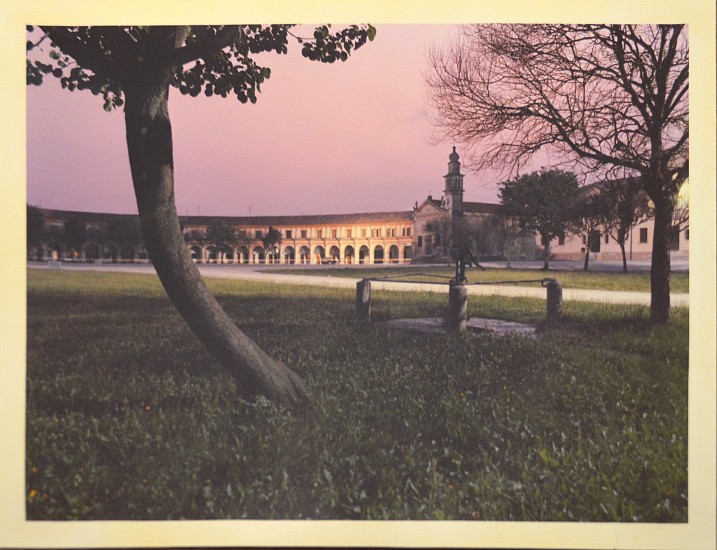
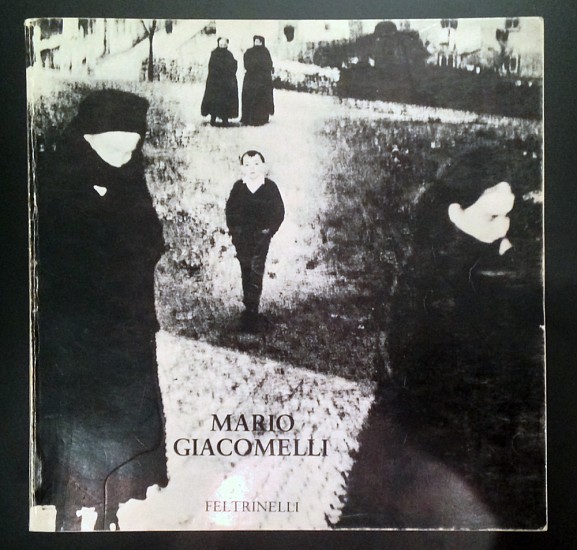
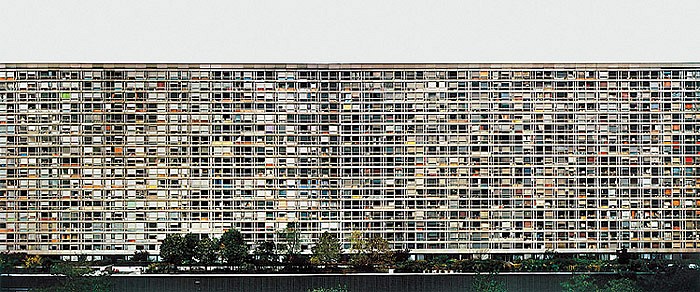
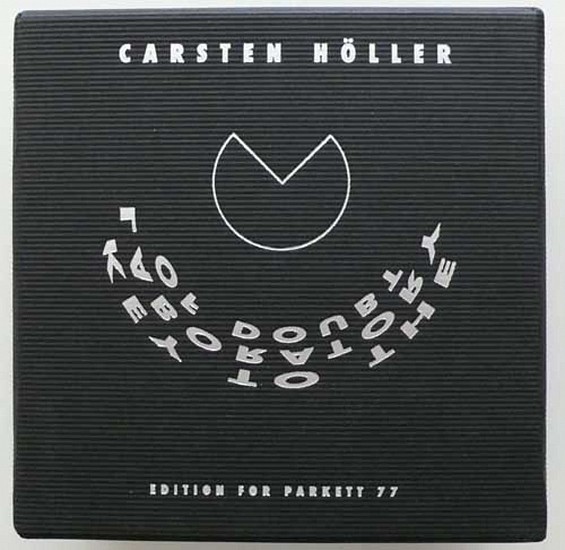
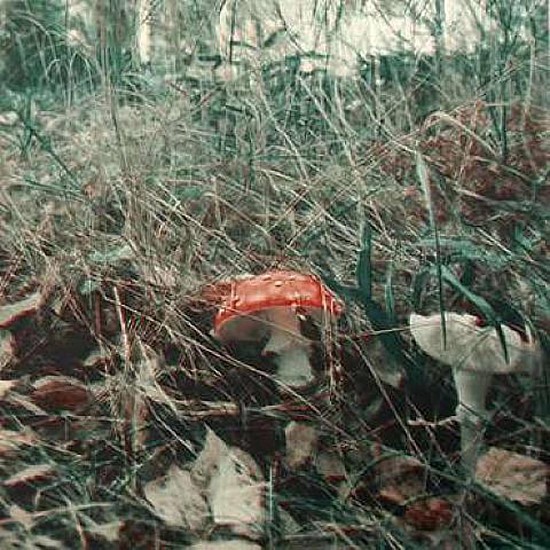
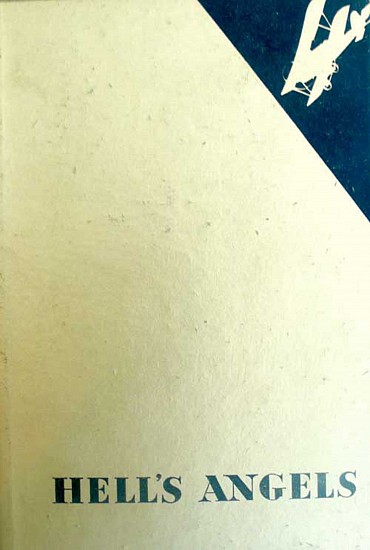
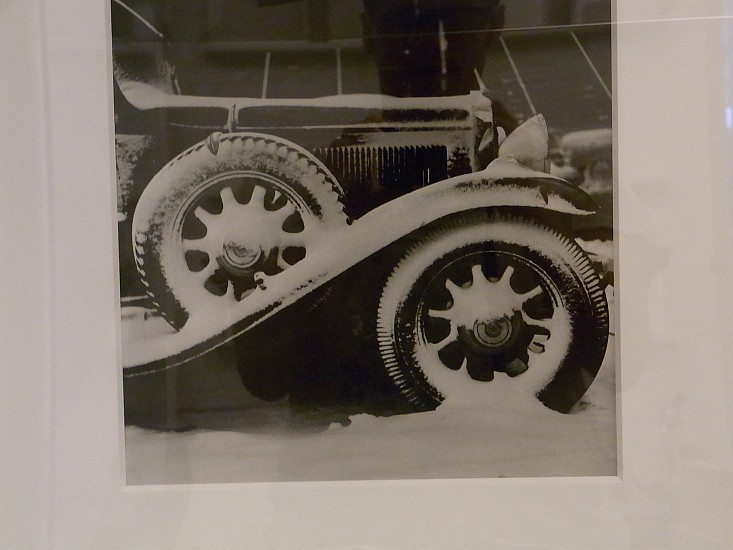
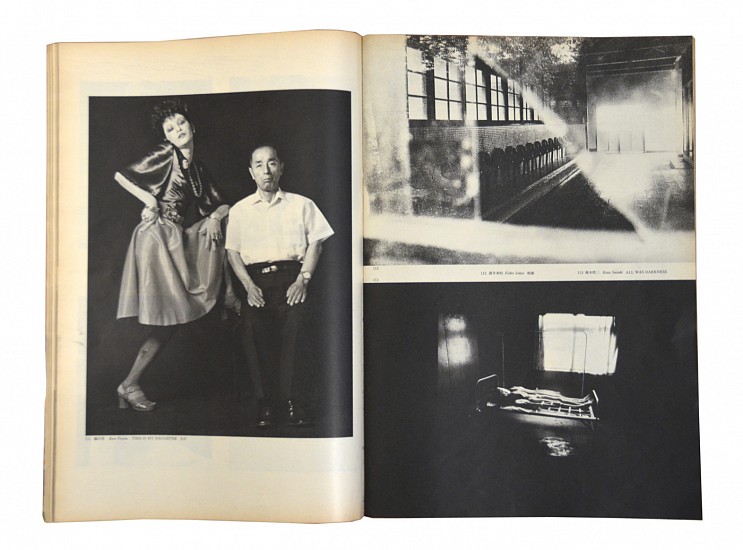
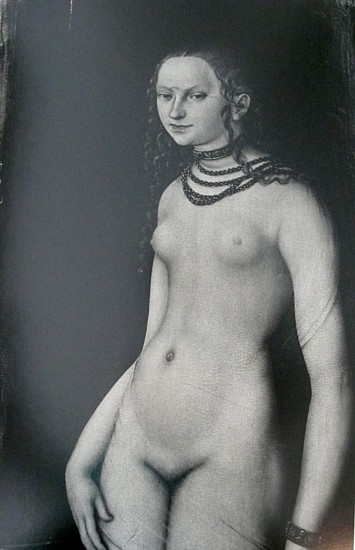
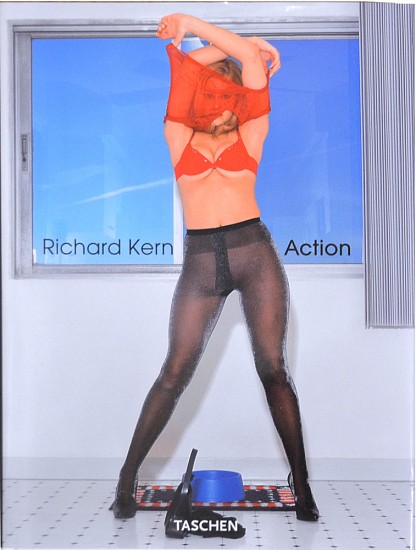
![Anselm Kiefer, DIE DONAUQUELLE. [The Source of the Danube].
1978](/images/19875_h550w916gt.5.jpg)
